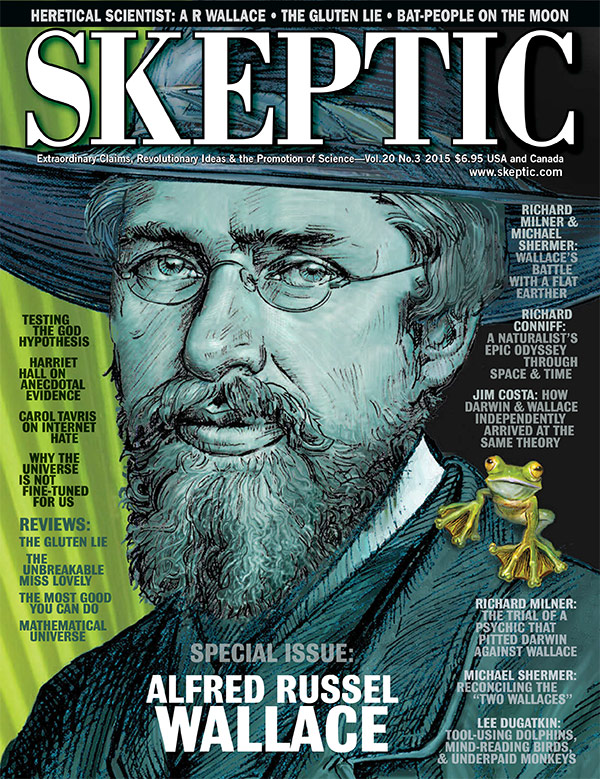In this week’s eSkeptic:
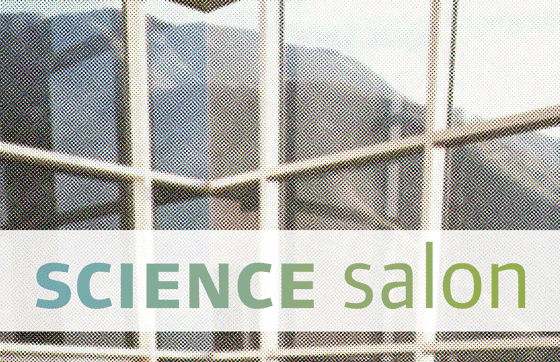
DON’T MISS LISA RANDALL ON NOV. 22
Join us for our first Science Salon, when the Skeptics Society hosts Lisa Randall in conversation with Michael Shermer on November 22, 2015 at 2pm.
The salon will be held at a magnificent and architecturally award-winning home in Altadena, with spectacular vistas of Southern California. (You will be given the address when you purchase your tickets.) In the tradition of European salons, there will be time after for socializing with drinks. Advance tickets include a reserved seat, an autographed copy of the guest’s book, hors d’oeuvres, and wine. Plus, you never know what other scientists and celebrities might just show up for these unique gatherings!
This event will be broadcast live online, then archived on Skeptic.com for future viewing for those who cannot attend.
ADVANCE TICKETS REQUIRED
Purchase tickets in advance by calling the Skeptics Society office at 1-626-794-3119. Seating is limited. Tickets will not be sold at the door. $50 per individual (includes lecture, autographed copy of the guest’s book, hors d’oeuvres and wine).
Call 1-626-794-3119 to reserve.
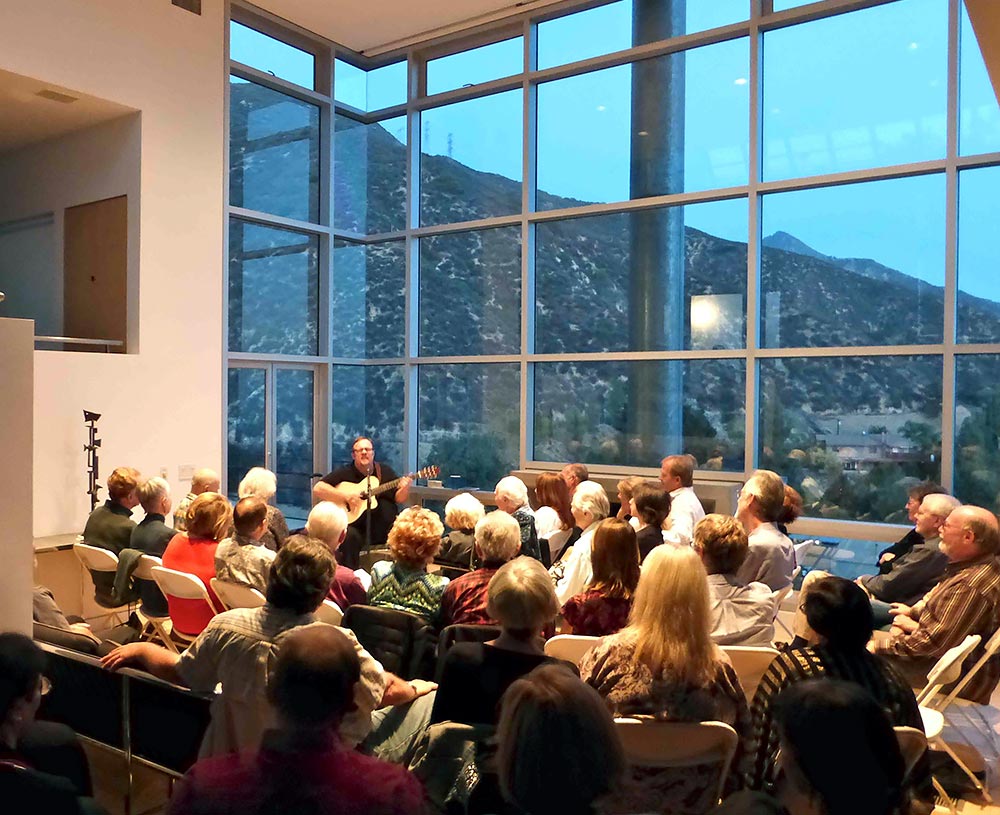
A concert at the Science Salon Venue
UPCOMING SCIENCE SALONS
Dark Matter and the Dinosaurs: The Astounding Interconnectedness of the Universe
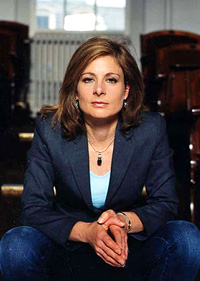
Lisa Randall (photo by Phil Knott)
The renowned harvard cosmologist and theoretical physicist explores a scenario in which a disk of dark matter—the elusive stuff in the universe that interacts through gravity like ordinary matter, but that doesn’t emit or absorb light—dislodged a comet from the Oort cloud that was ultimately responsible for the dinosaurs’ extinction. Randall teaches us an enormous amount about dark matter, our Universe, our galaxy, asteroids, and comets—and the process by which scientists explore new concepts. Order Dark Matter and the Dinosaurs from Amazon.
The Quotable Feynman (& His Van)
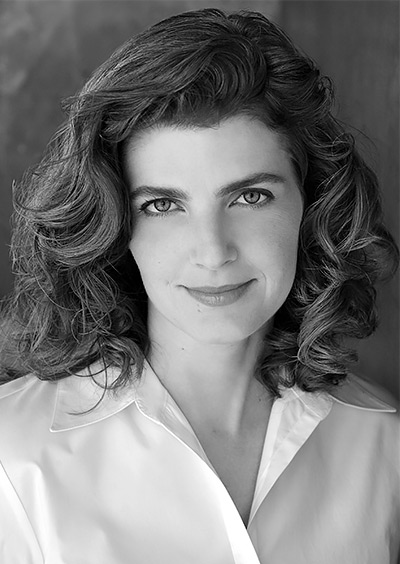
Michelle Feynman (by M. Houseman)
Join us on December 20, 2015 to hear Michelle Feynman who will discuss the life and legacy of her father: Nobel prize-winning physicist Richard P. Feynman. Physicist Seamus Blackey will bring Feynman’s van, newly restored and recently featured on The Big Bang Theory, so you can get your photograph taken with the famous vehicle featuring Feynman diagrams. And, joining us will be special guest Dr. Leonard Mlodinow, physicist and author of Feynman’s Rainbow: A Search for Beauty in Physics and in Life and The Upright Thinkers: The Human Journey from Living in Trees to Understanding the Cosmos.
About this week’s eSkeptic
In this week’s eSkeptic, Richard Grigg explains why he thinks Douglas Navarick’s response to his essay contains serial violations of the scientific worldview.
Navarick’s article “The ‘God’ Construct: A Testable Hypothesis for Unifying Science and Theology,” appeared in Skeptic magazine 20.3 (2015).
Serial Violations of the Scientific Worldview
by Richard Grigg
I am convinced that Douglas Navarick’s response to my essay contains serial violations of the scientific worldview. I have simply outlined below what I believe to be the central issues. Taking Navarick’s contentions in order:
1. He holds that since experiments to establish abiogenesis have thus far failed, the existence of a supernatural power in the universe has essentially been established by default. But no serious biologist would give up on abiogenesis that quickly (just as neuroscientists have not given up on the idea that consciousness is somehow produced by the human brain and not a trans-physical phenomenon). Where abiogenesis, specifically, is concerned, quoting Dr. Carol Cleland of NASA’s Astrobiology Institute, “It is…possible that life on Earth is the product of a very complex historical process that involves too many contingencies to be readily accessible to definitive experimental investigations.”
2. The heart of Navarick’s argument is based on cryopreservation: when a cell is frozen, chemical activity (at least the sort required for metabolism) ceases, but the cell is still alive. Thus life cannot be a function of the natural chemical processes in the cell. But there is a truly fundamental misunderstanding here: when a cell is frozen and metabolism (and most of the other six characteristics biologists use to define life) ceases, it is not in fact still alive; it is dead! There is no other conclusion to be drawn if we are to adhere, as we must, to the defining criteria that biologists use for identifying living material. When the cell is resuscitated, the processes determinative of life are restarted. Because we have all imbibed folk biology we are predisposed to get things wrong here, since that folk biology holds that there is an unbridgeable chasm between death and life: something that was once living but is now dead cannot come back to life, short of some wholly miraculous, trans-physical intervention (witness the Christian belief in the resurrection of Jesus). But we have been aware for decades now of the many cases in which a patient is clinically dead on the emergency room table only to be resuscitated a few minutes later. And if the frozen cell is dead, devoid of life, Navarick’s whole case collapses. The example of removing DNA from a cell is exactly parallel: for the time during which the cell is without DNA, it cannot reproduce, and reproduction is an absolutely essential component of any definition of life.
3. “In cryopreservation, a cell that is structurally intact is ‘sufficiently prepared’ to receive the influence that life will have on its biochemical activity when the cell thaws. There is no necessity for life to physically act on the cell by adding energy to it.” First of all, thawing the cell adds energy to it, the kinetic energy of random molecular motion. Beyond that, if there is to be any content to the contention that it makes a real difference for the allegedly transcendent property of life to be present in a cell, then that property must do something to the internal chemistry of the cell which that internal chemistry couldn’t do on its own; otherwise the purely natural chemistry of the cell would allegedly never manifest the seven essential characteristics of life. But to engage the cell’s internal chemistry and push it in one particular direction rather than another and have one specific causal effect rather than another, life must add energy to the cell. If life were not interacting with the cell’s natural chemistry in the form of adding a very particular sort of energy to the cell, then life would have no reason to have one particular effect rather than wholly different effects upon the cell. Indeed if life is a transcendent property that does not add energy to the cell, and even if it were possible for this non-energetic property to have a concrete and observable effect on the cell, the effect would be totally arbitrary and entirely different in each instance of this mysterious life-property interacting with a cell, so much so that we would not be able to identify life as having any particular, stable properties of its own; it would be a total blank for thought without any specific characteristics with which our minds could grasp what it is. In other words, the concept of “life” would be evacuated of all meaning. ![]()
About the Author
Richard Grigg, Ph.D. is Professor in the Department of Philosophy, Theology, and Religious Studies at Sacred Heart University in Fairfield, Connecticut. He is the author of eight books and numerous articles on the subject of radical Western religious thought.
Life Is Potential, Not Current, Biological Activity
by Douglas J. Navarick
Richard Grigg’s objections to my arguments are based partly on a misreading of them and partly on a demonstrably false application of the seven defining characteristics of living cells. Listed below are my replies:
1. No Conclusions Reached Yet on the Supernatural Grigg misrepresents my position with the statement, “he holds that since experiments to establish abiogenesis have thus far failed, the existence of a supernatural power in the universe has essentially been established by default.” What I said was that “If abiogenesis failed, then…” the rest of the statement “would” follow—it’s conditional on the “If”, not a fait accompli. There would need to be a consensus among researchers that creating a living cell from non-living material was a probably an unachievable goal. Movement in this direction could be shown by a decrease in the number of researchers working on the problem or by a reduction in resources allocated to it by Synthetic Biology companies.
2. Frozen Cells are “Biologically Inert”, Not Dead Grigg states that “when a cell is frozen and metabolism (and most of the other six characteristics biologists use to define life) ceases, it is not in fact still alive; it is dead!” Grigg mistakenly equates life with the simultaneous presence of all seven of the biological functions that are required as evidence that the cell is alive. The example he gives of Venter’s synthetic bacterial cell is very helpful here because it makes clear that life is defined in terms of its potential to produce all seven biological functions, even if one of those functions (reproduction in this case) is currently absent.
As discussed in my previous reply to Grigg, the cell’s DNA was removed and then the manufactured DNA was inserted. During the interim the cell could not reproduce, so according to Grigg it failed the biological test for life and therefore it was dead. But the consensus in science and bioethics is that the cell was still alive. I quoted this conclusion from the Presidential Commission that was asked to investigate the claim that Venter’s lab had created life: “The researcher’s man-made genome was inserted into an already living cell.” When the new DNA was inserted, the cell used it to prsoduce another cell with the same DNA. As Grigg notes, frozen cells are at the extreme opposite end of the scale of how many of the 7 functions are present. Following his reasoning that Venter’s synthetic cell is “exactly parallel” to the frozen cell, we can reach the same conclusion that life remains present in the frozen cell because it creates the potential for the cell to resume all seven of its basic functions. Here is how the synthetic biology company, OPS Diagnostics, characterizes frozen cells: “Once at ultralow temperatures, the cells are biologically inert and can be preserved for years.” They could have said the frozen cells are “dead.” They chose to say “biologically inert”. It implies that the cell is not dead; it’s alive in the sense that the cell retains its potential (i.e. property of life) for resuming all of its normal biological functions.
3 Life is An Influence, Not an Energy Source. Grigg maintains that a transcendent property of life must in some way affect the chemistry of the cell by adding energy to it. But this is circular reasoning. He assumes at the outset that all natural processes are explainable in natural terms and then uses this assumption to support his contention that energy would have to be added to the cell because (he has assumed) that’s how nature works.
Later, Grigg considers the possibility that there could be a non-energetic effect of a transcendent property of life but concludes, no, it isn’t possible because this influence would have to be “totally arbitrary” and not specific to any of the cell’s functions, and so cells would have no unifying set of characteristics that we could point to as defining criteria of life. But the energy that cells naturally work on is also general and could be applied to any of the cell’s functions. Why would a transcendent influence have to contain within it any specific set of instructions?
In sum, the view that life is non-material is fully defensible. It is a legitimate alternative to materialism in an ongoing debate that if nothing else serves to stimulate thinking about who we are and our place in nature. ![]()
About the Author
Douglas Navarick is an experimental psychologist and Professor of Psychology at California State University, Fullerton. He regularly teaches courses in Introductory Psychology and Learning and Memory. Since the 1970s Navarick has published research articles on choice behavior in pigeons and humans and is currently investigating how we make intuitive moral judgments.


